-
testing, module development and materials
02/02/2019 at 20:46 • 0 commentsSet 5 notes as of 2/2
Based on voronoi pattern with a couple extras
½ diameter with 3” long arm
A will be straight 3”
B will be straight 6”
C will be a v piece
D will be a bend piece (elbow) at 15d offset?
E and on will be as derived, to be ordered based off of shortest combined arm lengths to longest and each arm ordered 1 shortest, 2 middle or equal length and 3 longest.
Sample objects will need to be made to allow for testing. We should have 5-10 samples for each test. We will largely be looking at stress and strain on the instron. The jaws for holding a sample are .25 wide Our nominal thickness is .5 so an adapter is to be molded, there will be two variants. We can produce molds for both. These molds will work with other materials too.
![]()
Actually…. Now that I think about it I’m going to make it so that the molds for our test cores can also serve as unit A and B (detachable end caps.) Since we will need to make many molds for both this will save a lot of time hopefully.
We are hoping to get some funding through our school to help cover some costs, waiting on word for that and in the meantime taking calculated risks. We will need to order more materials soon.
We are meeting with school staff next week to find a way to uniformly grind our substrate (in the case of mycelium) so we get a more dense output.
Starting to think of layout format for communication of designs (spreadsheet)
Going to start working on our final documentation in a mostly chronological way following along with the hackaday page and creation and edit dates of various documents and files.
So, as an example; the blog post would have a thumbnail and link (evidence of the work) and quote or overview with more elaborate documentation (go back to dated files and screenshot for example) Weave the links, mention meetings, people and places, inspiration along the way.
Testingmolds2bonus is both A, B and the testing units in file directory (internal)
Took me three tries!
We tried some fillet variations for the primary module set and ran into some errors so that is being redone. Ultimately it looks like we are going with a minimal chord length based fillet. This might change however if we can find a smoother transition which does not cause molding/demolding problems.
-
Set 5 progress
01/27/2019 at 03:48 • 0 commentsSet 5 is underway now; transitions are carefully being planned this time around to make for easier molding.
We reached out today to some people who can help us increase the density of our mycelium material and do materials testing so we have actual numbers moving forward, this will hopefully enable us to do more complex material simulations and to increase our overall understanding of this system.
We are hoping to have a new set of modules VR ready this week.
While we will retain backwards compatibility, for testings sake we will likely be transitioning into a one set study. This will allow us to study interaction with this smaller module pool and specific behavioral traits. In short, we are getting close to the point where we will really need to start collecting more feedback.
This project will continue past our school semester but we are planning to have a full mold set completed in a relatively short period of time. To this end we will have to choose and stick with a set for a while for developments sake.
-
Beginnings of module set 5
01/22/2019 at 02:02 • 0 commentsThe product of new patterns has yielded a set with partial symmetry on one axis and a low yield of modules, we are currently confirming that we can make a simple mold form which will produce the above, most complicated module in the set. If so we will move on to preliminary form finding and labeling for existing system compatibility.
This set has a much more dense overall point cloud, this means that higher resolution models will be possible and a greater probability of a stable structure within a given space. Ultimately we can put more material in the same area, the question is whether this causes other issues with alignment down the line.
This set looks like it will yield 14 or 15 workable modules for testing.
We have decided that we will stick with 1" thickness for now for backwards compatibility.
We have also decided that we will be trying to use concrete, resin, mycelium and brushed aluminum (cast wax and then melt out) as our example materials and tests. This gives us a reasonable amount of security to move forward and make sure documentation and renderings are more or less uniform.
The next batch of mycelium growth is delayed, we need to figure out lab testing standards, make testing molds, decide on basic formulations, decide on next levels/textures of our mycelium and harvest some additional trial wild samples. Right now we would waste a lot of material for lack of molds.
-
Reduced component list
01/12/2019 at 00:14 • 0 commentsOne of our major barriers to testing form finding exercises has been the sheer number of modules. Twenty-five is simply too much to handle at first, most people try to use only a few in repeating patterns. Unfortunately our current scale makes such structures large and unwieldy with little stability.
Since we hoping to increase the density of our material we can move to a smaller scale, this time with an average target side length of 3" with our thickness being half an inch.
This is a good opportunity to just move to a smaller module list, or several discrete solutions and eliminate from there. Again, we are using an applied voronoi pattern to a cube (initial condition 10x10x10 with between 4-7 elements.)
These are just a few solutions, but I am avoiding too dense of a point cloud which we have observed as having caused issues in the past. This is made with the below Grasshopper script.
-
Next steps of material exploration
01/09/2019 at 16:50 • 0 comments![]()
To outline some of our next steps:
We MUST create the remainder of molds as fast as possible. 26 molds at 12 hours each is a month of printing! We also need to explore other methods of making molds.
How do we decide on a final form and size ratio? This will affect our production time and scale (how many of each module we can produce.
We need to verify that molds attached to one another will grow together with no weak spots.
We need to find the ideal grind/density of our mycelium medium.
We must decide on all critical features ASAP and the rest of the semester is just form finding and marketing essentially.
We need to find a way to duplicate our molds quickly without additional 3D printing. (This will be an archive set of molds for “distribution”)
We need multiple containers to grow in.
We should try inoculating our own substrates from found fungus’
We should try various additives in a scientific way. This means specifying mix ratios and stuff so others can replicate our results. An example would be measuring the volume of initial versus after blending volume.
We should try not to do anything too weird. (no redbull)
We need a standardized growth form which we can use for testing of relative strength and composition in lab.
We need a standard testing procedure.
We need a formalized growth, molding and demolding schedule.
We must determine material properties.
We need to start doing more simulations in other materials as we generate actionable data.
---------------------------
-We need to contact the west coast Mycoworks to see if we can get advice on growth- (they also produce a leather substitute)
-Reached out to seth
-We need to reach out to more people in our field who are working in complex geometries.
- We need to determine the library set and work with all real world constraints we have
-We need a storyboard for the past, present and future of our project
-we need to complete the story-line of how exactly designers are working with this
Extra details:
Analog/example “brute force, best fit solver” animation for next step demonstration (gif) since this is not practical at this stage.
What we are really selling is the way we communicate designs (a1-b3) and the molding method/material (thin shell and mycelium)
The modules are just one of MANY possible forms. If we can create only a few interesting designs that are a success, over time we will find a small reduced module set which allows for a large range of designs. For now it’s more of a question of logging man hours for form exploration.
-
Successful first casting
01/09/2019 at 16:43 • 0 commentsOur first casting(s) were a success! Not perfect, but this was a very informative stage.
![]()
We found that we definitely need to increase the overall density of our material and also basic things like ventilation. Several defects having to do with bacteria were found, but in general even with our relatively relaxed sanitation procedures everything went well. This gives us confidence that others will easily be able to achieve similar results.
![]()
poor ventilation causes issues as seen below.
![]()
A more detailed post will follow outlining next steps.
-
First material experiments and continued development
12/30/2018 at 06:04 • 0 commentsThe end of the school semester and our travels have delayed a lot of progress but we are finally getting settled back into things with a new schedule and objectives list.
Of particular note, we have created one open ended mold for testing the mycelium and another mold should be on its way soon. We 3D printed the mold as two parts and are using circle clamps (or rubber bands) to compress it together.
We are also molding rods of various thicknesses so we can do more testing about the relationship between scale and strength.
![]()
![]()
![]()
We should be taking apart these molds five days from now so Thursday, hopefully we have an interesting update then.
We are continuing form explorations with the existing module set but need to log more hours in both virtual reality (Sketch Up) and Solidworks. In time we will have more examples of what kind of structures can be made with this system, this will likely be a fast paced and exciting semester!
-
Impending project name change, material experimentation.
11/22/2018 at 19:08 • 0 commentsWe are starting to experiment with mycelium and are thinking of generating some test molds soon. The material we got from Ecovative is surprisingly strong and we really do think it will work well for this project. Expect tests in the near future!
Set 4 OBJs are uploaded and available for use now! Go have fun in VR (and share what you make!)
Right now we just need people to spend time trying to design with Geometer, feedback on the learning curve, observed patterns and form finding results and to expand our outreach. That being said we know that this is difficult to approach initially, we are looking for ways to get people introduced to the system.
![]()
-
New modules and additional updates:
11/15/2018 at 20:59 • 0 commentsThis update:
-Material choices
-New set of modules from cube, and exploring L systems.
-Working jog and twist components
-Continued VR explorations
-3D print batch on its way, manually arranged for group print.
-Updated files (sld and STL)
-Presentations
-Due to the duration of this project, Jason and I (David) have decided to focus on two materials; mycelium and cast resin. Choosing these two materials gives us time to do simulation work and mold optimization and opens up the possibility of two module types, one which is used for designing (resin) and a set for “manufacturing” which would be open ended module molds to be filled with mycelium. We feel fairly confident with our material choices. Part of the reason we are making documentation open source is so that others may optimize module sets to a different material; say metal or carbon fiber, etc. Assuming connection types and general geometry are similar they would be compatible.
-A new set of modules has been developed, backwards compatible with earlier sets. (this is set 4) it contains modules derived from a Voronoi 3D pattern cube and dissected with normals from central node to half of each arm. Corrected jog and twist components have been included. The models do not have name designations assigned or imprinted currently and are in archive root parasolid and 3dm. Sld and stl are functional, with a later upload in OBJ. This set is still considered experimental and is intended to be used with other sets.
-Investigations into L systems have yielded a new set of possible components, but these have not been generated yet for functional use in Geometer.
-We continue to us VR, specifically Gravity Sketch to do digital form finding and experiment with our modules. We are currently trying to develop and ascertain a style, an organization and common trait of this design workflow. To this end we hope to develop an aspiration model which inspires other to explore geometers capabilities.
-A physical test batch for module set 4 at .25 scale is due to be printed soon and will take 26 hours on a Form 2.
-Look for batch 4 in the downloads section, an updated file containing OBJ files for VR work will be uploaded shortly.
-We have had multiple presentations in front of the senior Industrial Design class at Jefferson University and have been met with positive feedback. We are also looking for advisers and collaborators so are conducting one on one meetings. As always, we welcome outside commentary and ideas of any kind. This presentation in a slightly modified format is included with set four and is our current methodology in communicating project intent.
-
Utilizing VR For Rapid Prototyping
10/24/2018 at 14:28 • 0 commentsAs our progress on the library of parts becomes more refined the need for validation beyond theoretical models for our kit of parts become more present. With the initial library completed, we did a 3D print of parts A-Z scaled down for easier printing and ability for play. Even scaled down, the current hiccups of prototyping for play on the physical level become apparent.
![]()
Printing many parts at once even generated some parts that had melded in the SLA print process, this may have been due to importing individually instead of as a group.
![]() While the ability to physically manipulate parts is important to us, we looked for a middle ground that would allow us to generate parts at whim, while still being able to manipulate and play with forms at the human scale. We are utilizing VR to be able to play with and identify the strong points/Issues that arise when generating full scale objects out of our organic building blocks. We are currently using Gravity Sketch.
While the ability to physically manipulate parts is important to us, we looked for a middle ground that would allow us to generate parts at whim, while still being able to manipulate and play with forms at the human scale. We are utilizing VR to be able to play with and identify the strong points/Issues that arise when generating full scale objects out of our organic building blocks. We are currently using Gravity Sketch.This only requires our objects to be converted to .OBJ. We are making these files available to anyone who would like to test or play with them as well.
![]() We will update with examples of constructed models and a folder containing parts to start to address currently observed errors in assembly.
We will update with examples of constructed models and a folder containing parts to start to address currently observed errors in assembly.
Geometer
A Holistic Design Tool for Creating, Communicating and Manufacturing Advanced Human-Scale Forms for Design Pioneers and Producers
 David Troetschel
David Troetschel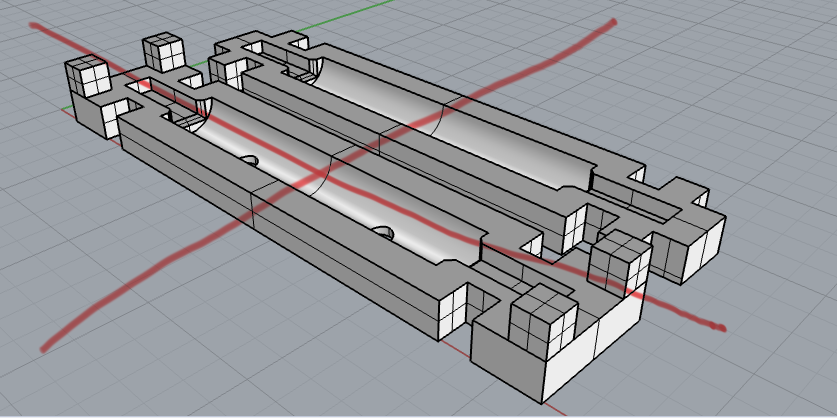
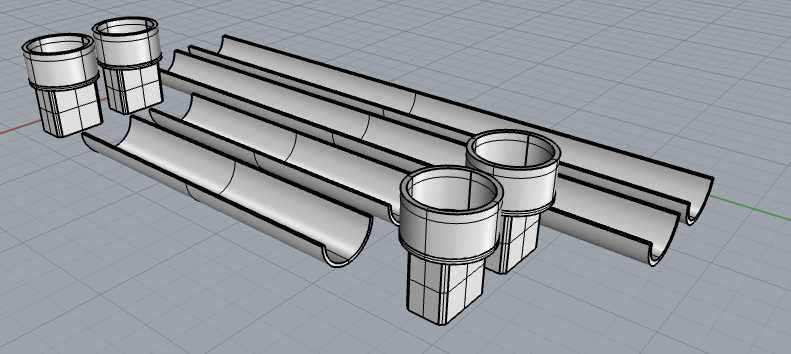
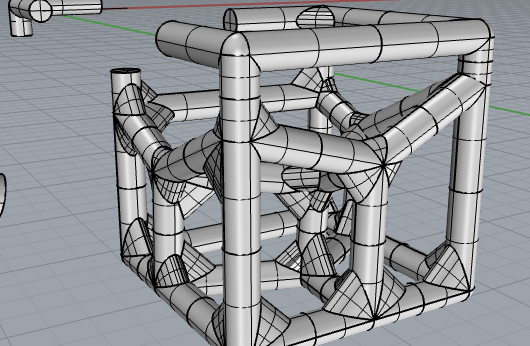
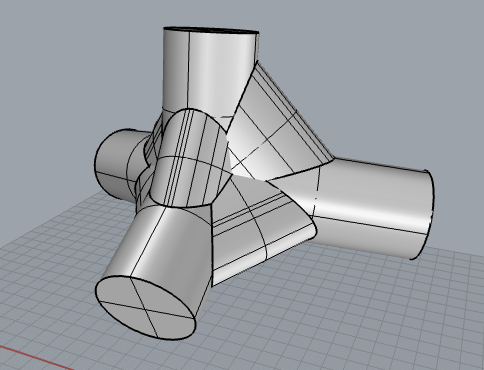 The product of new patterns has yielded a set with partial symmetry on one axis and a low yield of modules, we are currently confirming that we can make a simple mold form which will produce the above, most complicated module in the set. If so we will move on to preliminary form finding and labeling for existing system compatibility.
The product of new patterns has yielded a set with partial symmetry on one axis and a low yield of modules, we are currently confirming that we can make a simple mold form which will produce the above, most complicated module in the set. If so we will move on to preliminary form finding and labeling for existing system compatibility.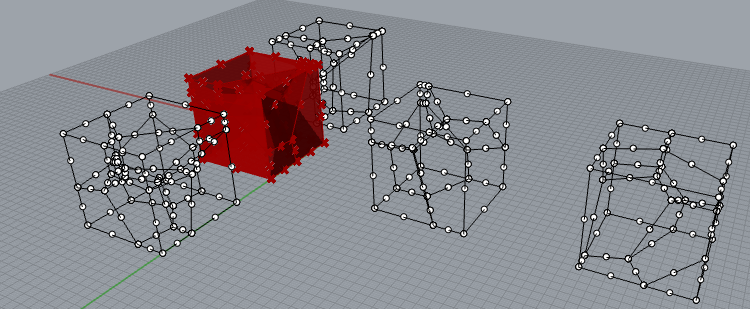

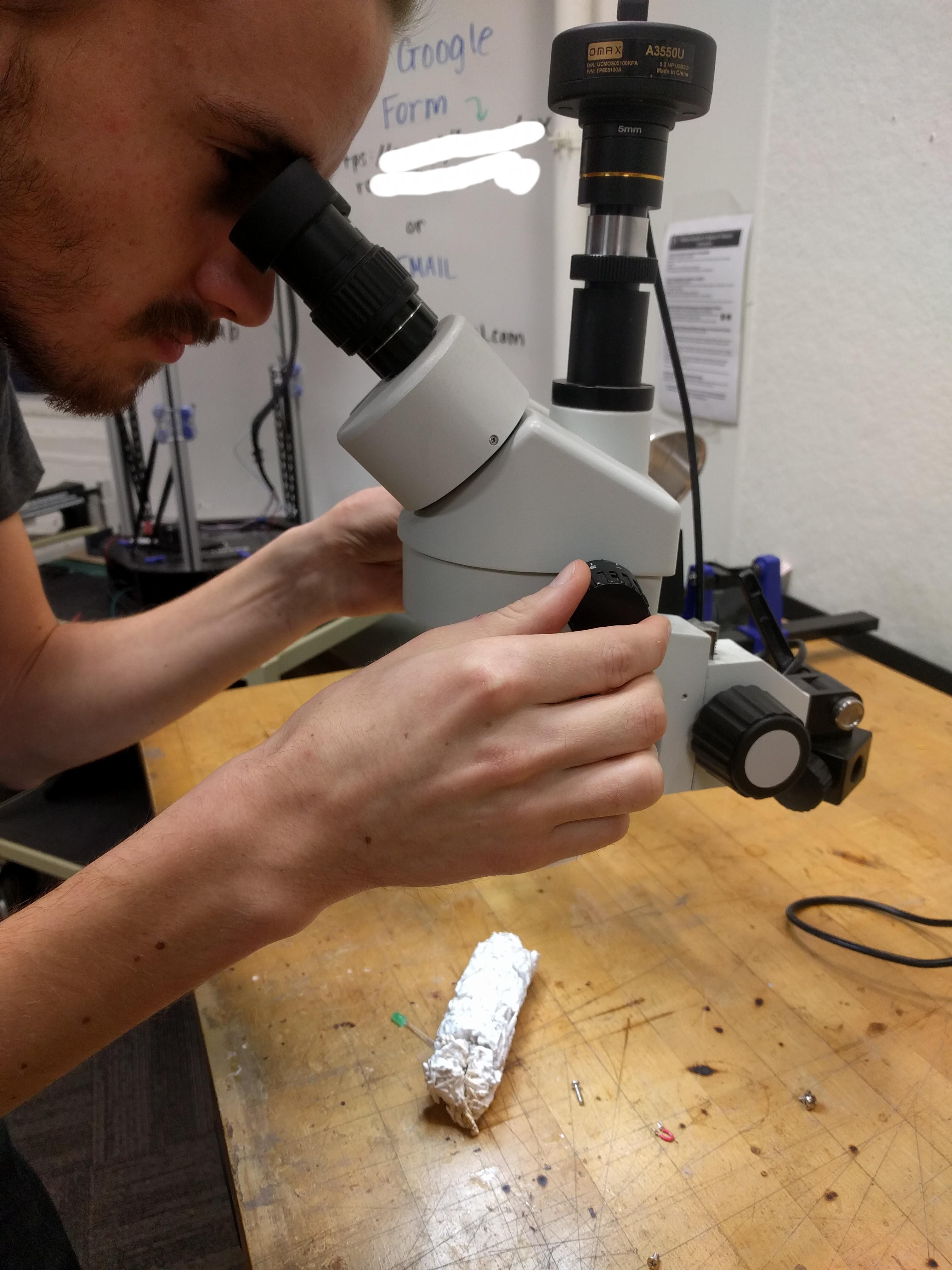
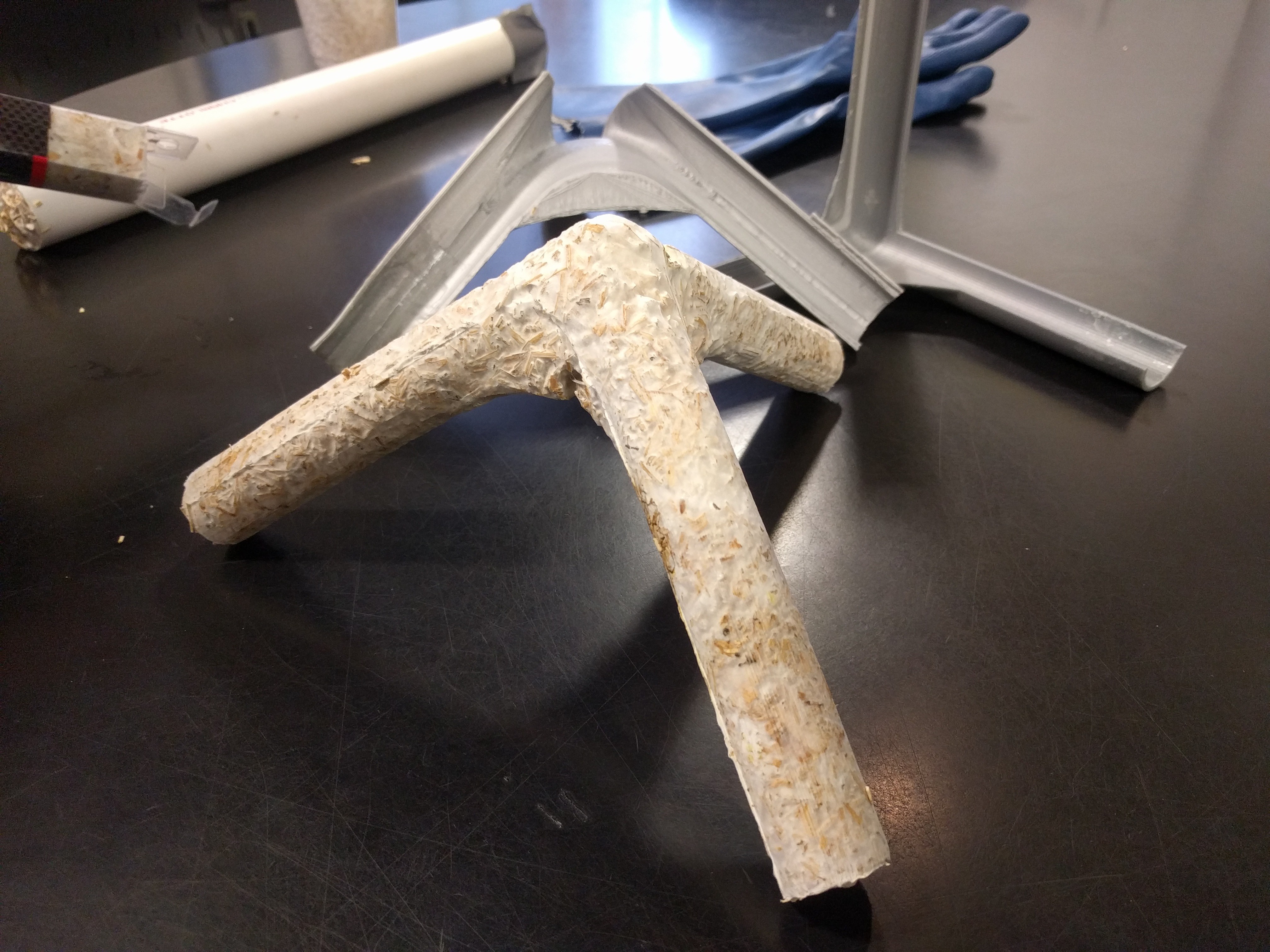
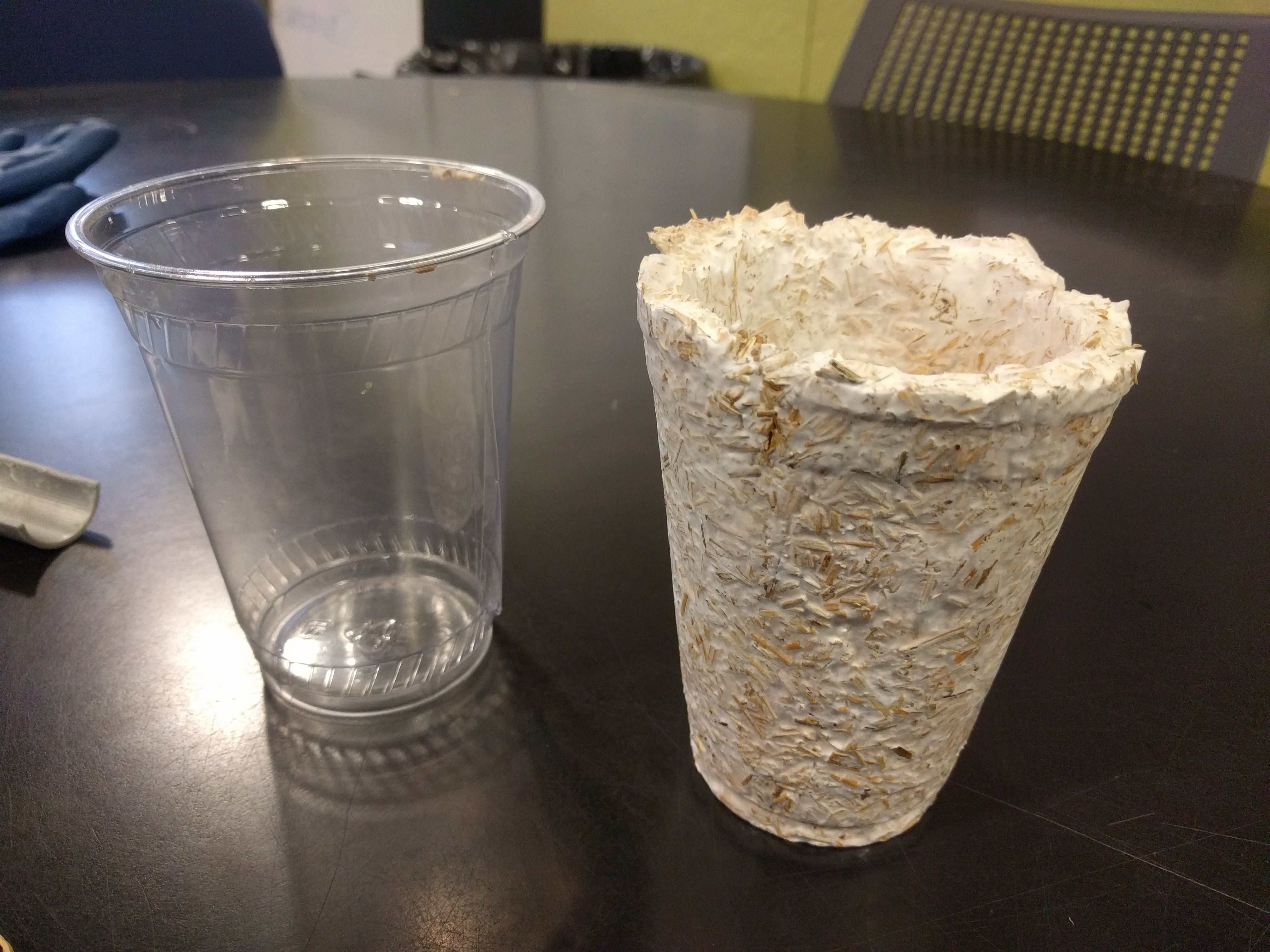
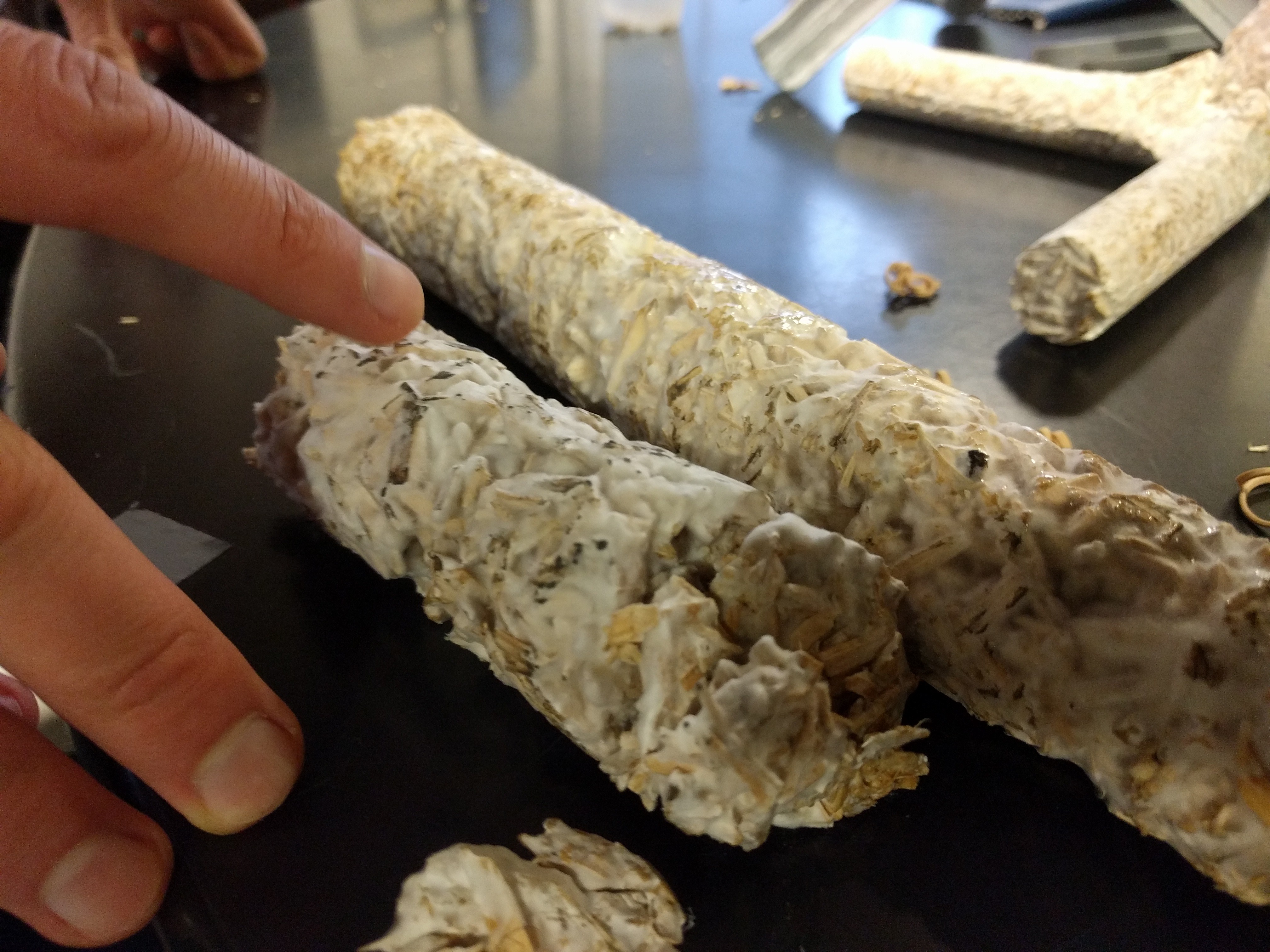
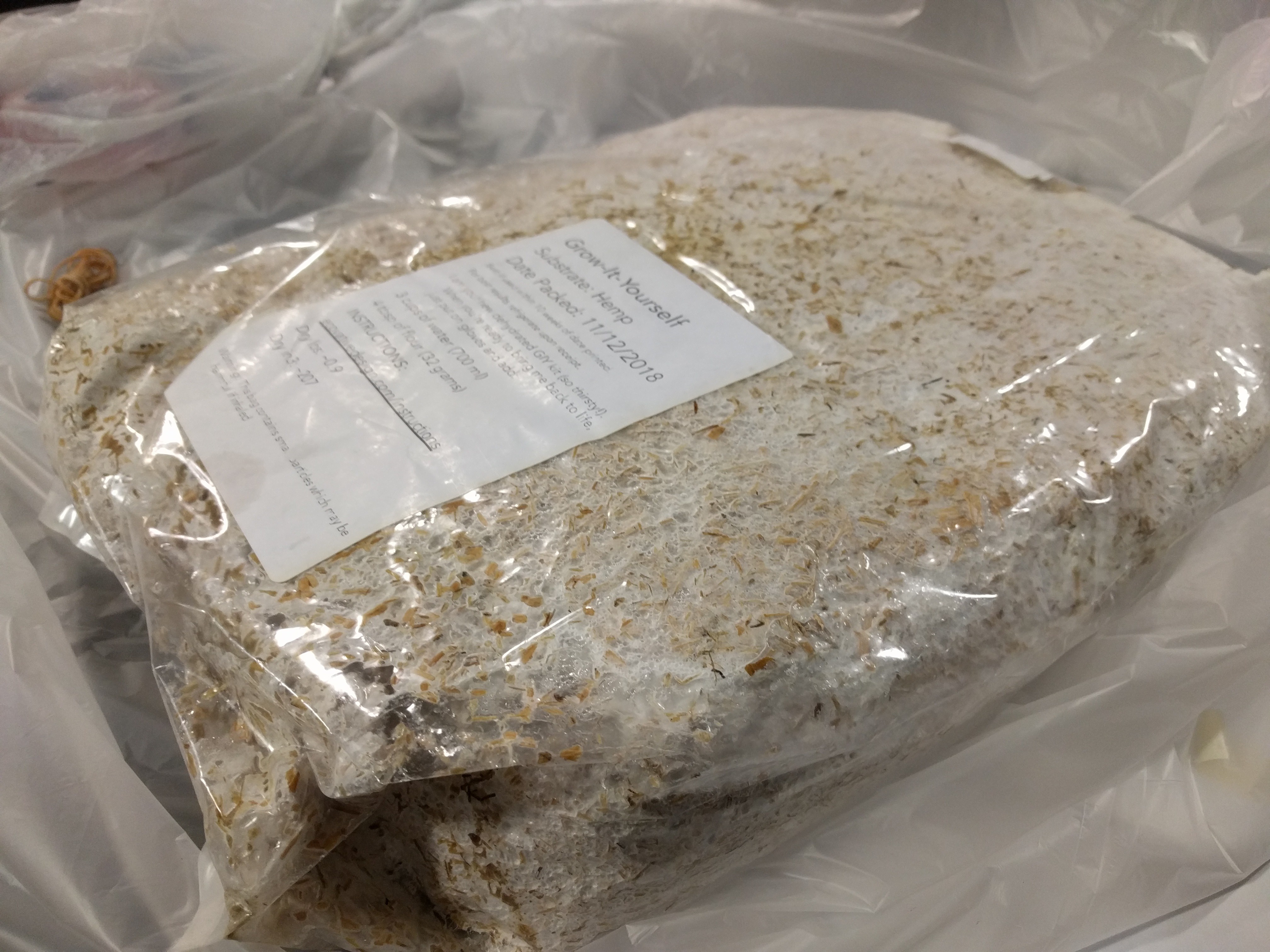
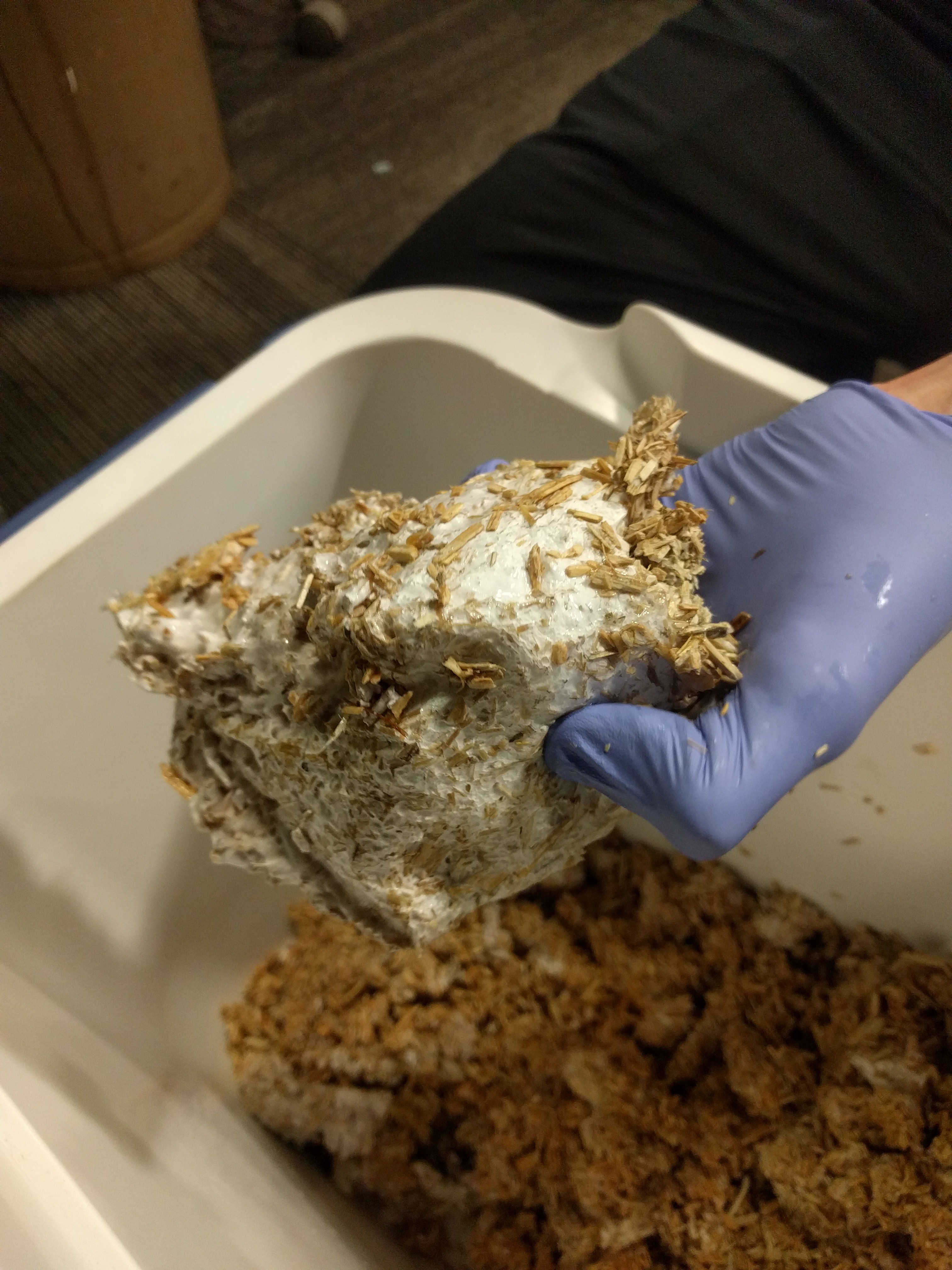
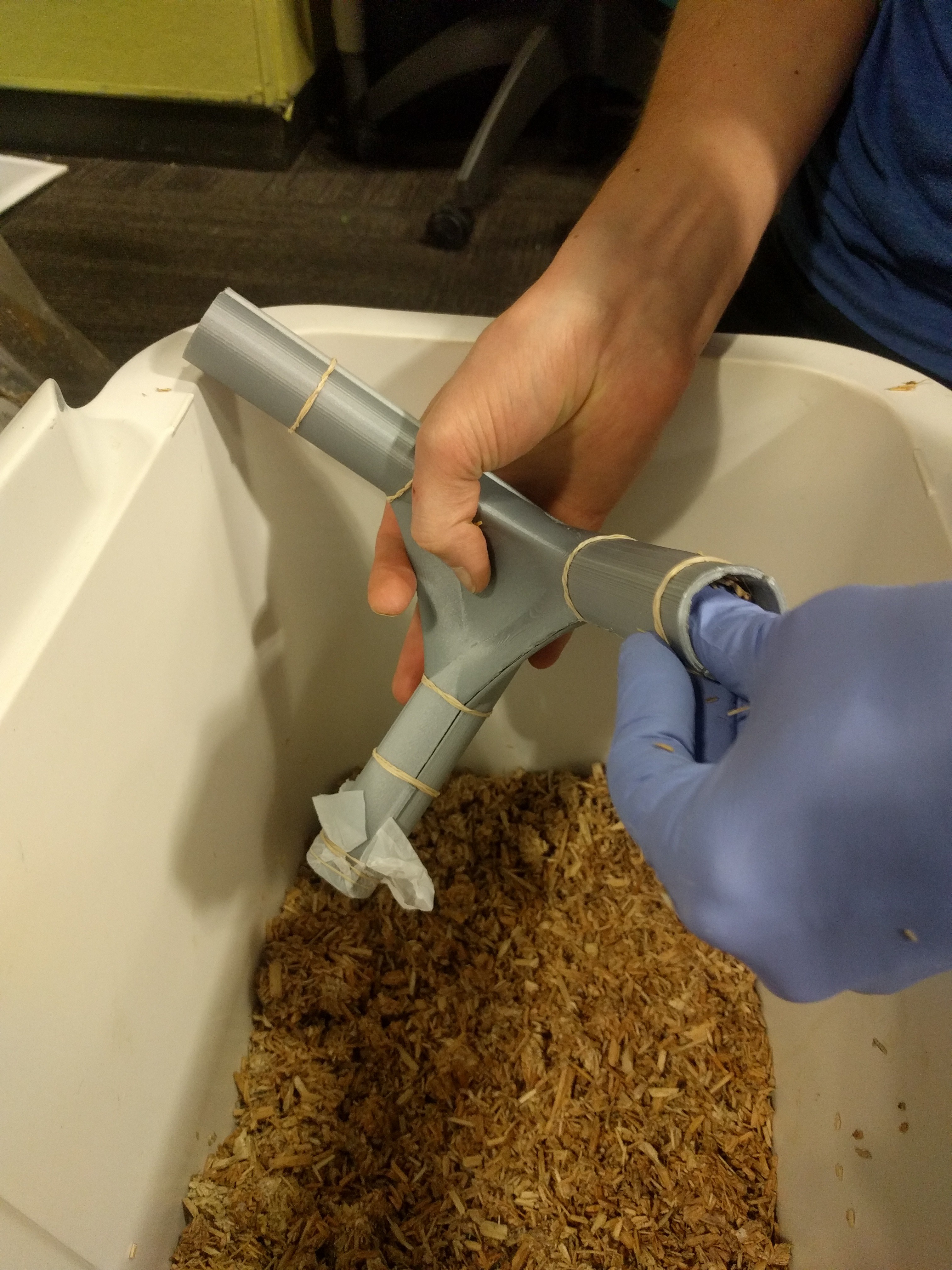
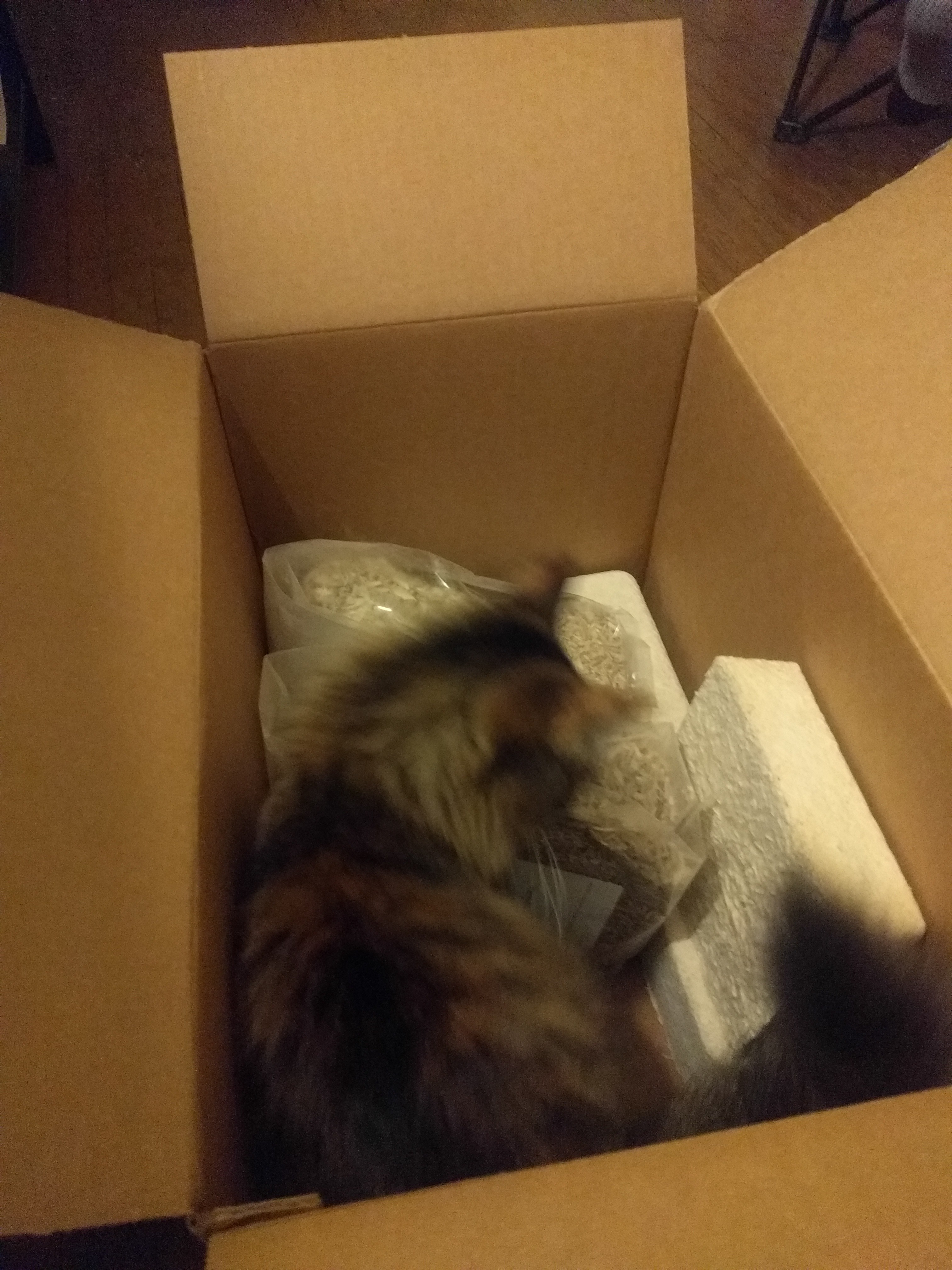
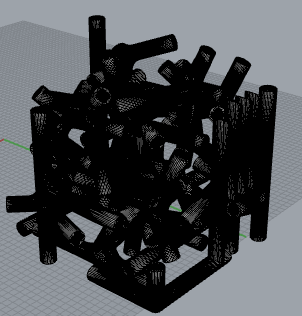
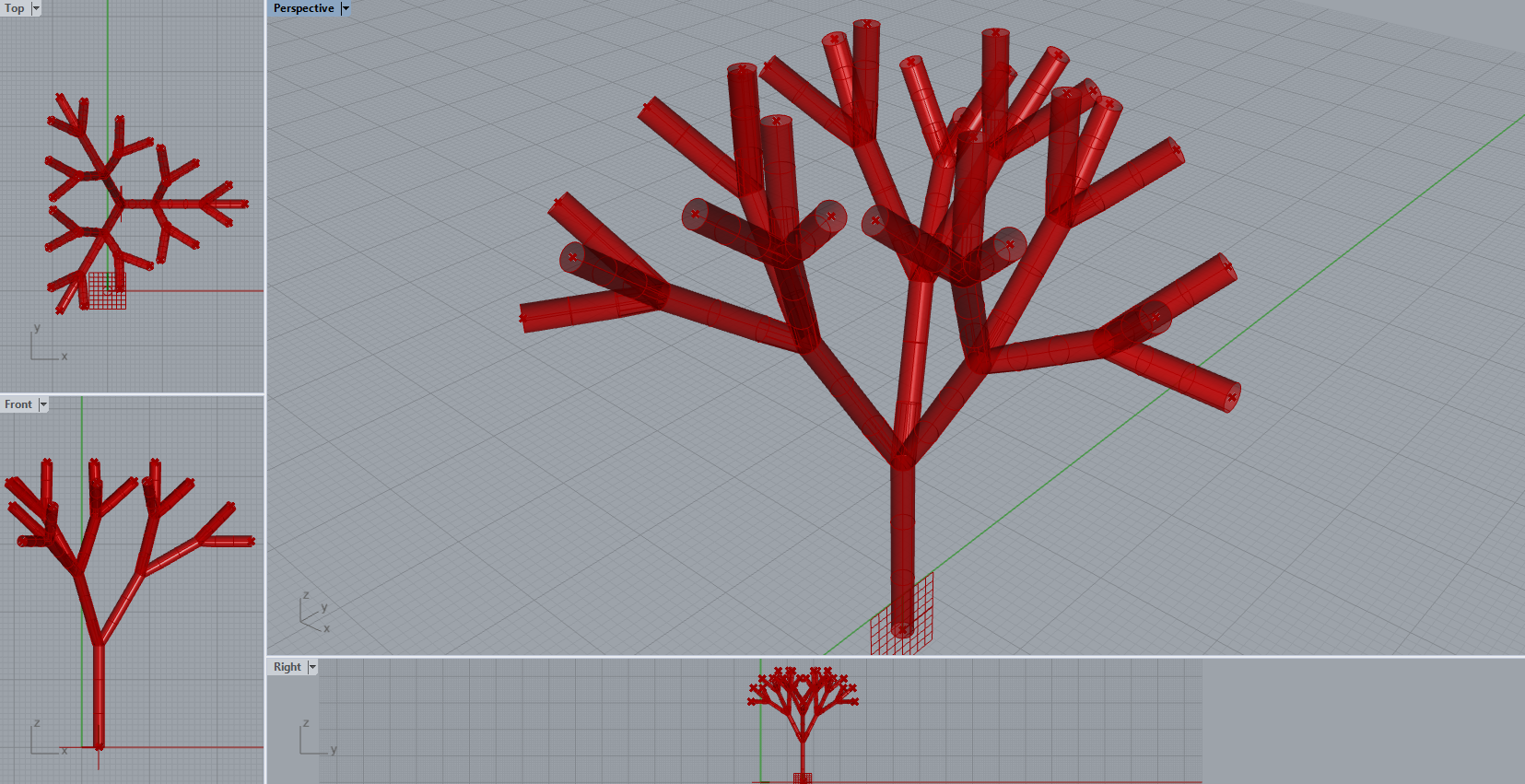
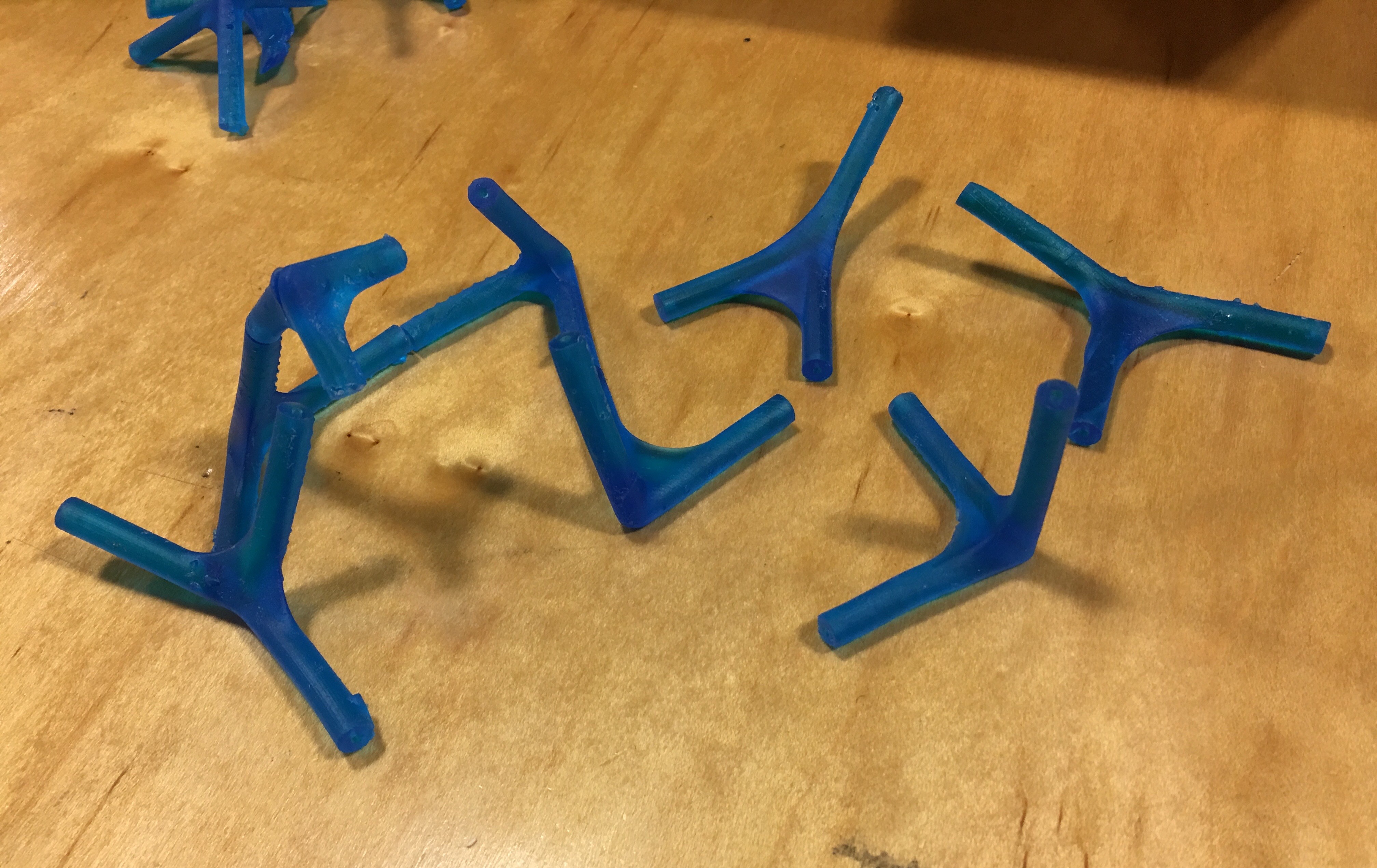
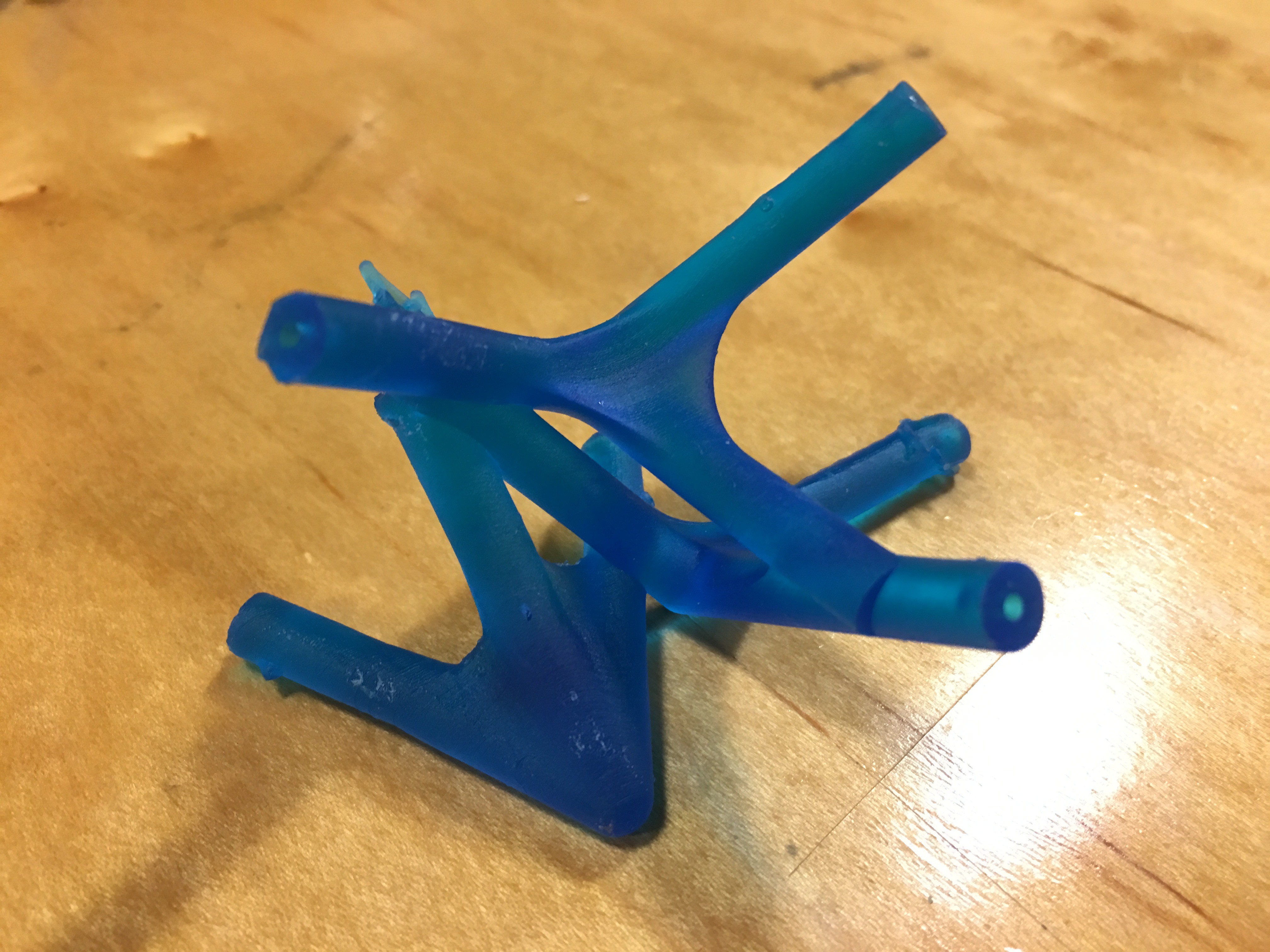 While the ability to physically manipulate parts is important to us, we looked for a middle ground that would allow us to generate parts at whim, while still being able to manipulate and play with forms at the human scale. We are utilizing VR to be able to play with and identify the strong points/Issues that arise when generating full scale objects out of our organic building blocks. We are currently using Gravity Sketch.
While the ability to physically manipulate parts is important to us, we looked for a middle ground that would allow us to generate parts at whim, while still being able to manipulate and play with forms at the human scale. We are utilizing VR to be able to play with and identify the strong points/Issues that arise when generating full scale objects out of our organic building blocks. We are currently using Gravity Sketch.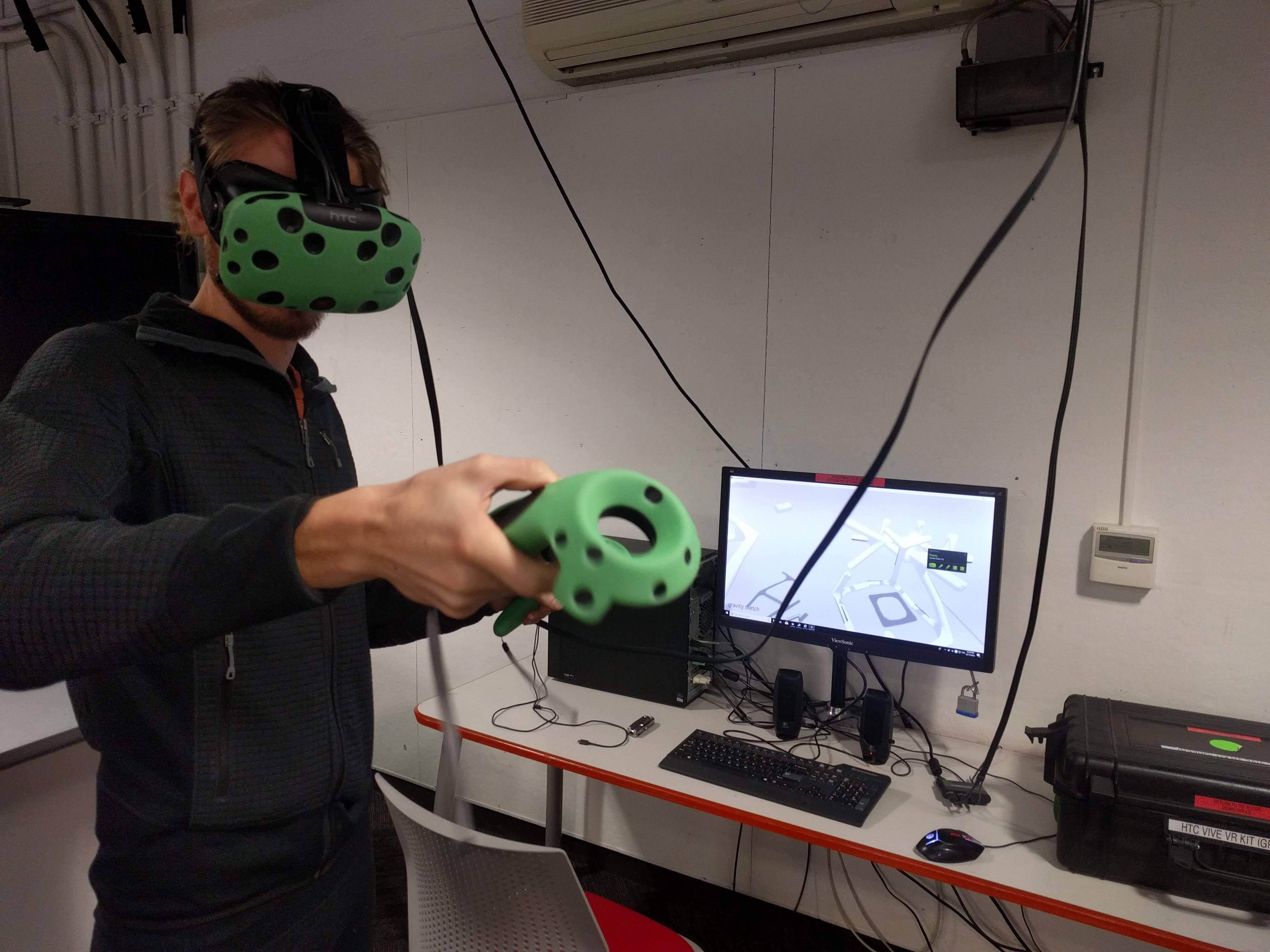 We will update with examples of constructed models and a folder containing parts to start to address currently observed errors in assembly.
We will update with examples of constructed models and a folder containing parts to start to address currently observed errors in assembly.